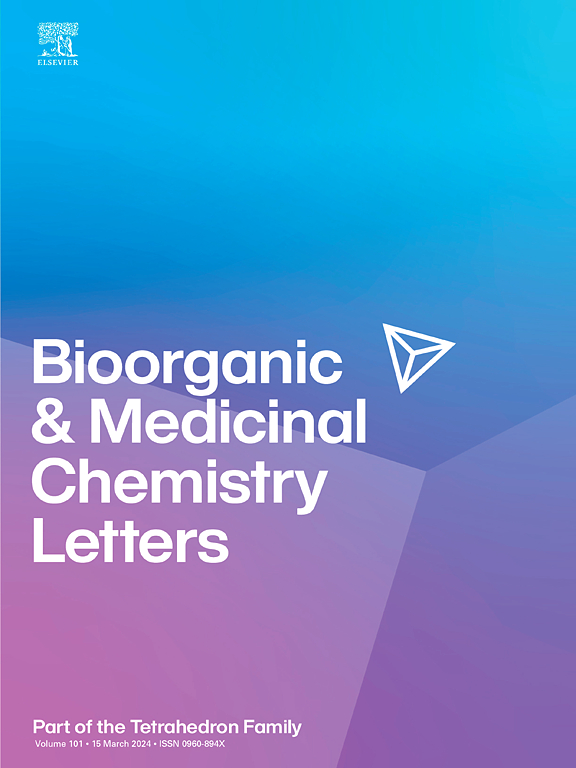端粒酶逆转录酶降解通过合理设计的共价蛋白水解靶向嵌合体。
IF 2.5
4区 医学
Q3 CHEMISTRY, MEDICINAL
引用次数: 0
摘要
端粒酶逆转录酶(TERT)的表达是癌症的一个标志,维持端粒的完整性,使复制不朽。然而,TERT也具有多种酶依赖和不依赖的功能,以支持癌症的生长和生存,包括增强DNA损伤反应。抑制TERT逆转录酶活性的药物可防止端粒延长,但可能无法限制介导癌症治疗耐药性的其他TERT功能。因此,我们应用基于结构的设计、模块化合成和生化分析来开发一种蛋白水解靶向嵌合体(PROTAC),以驱动癌细胞中TERT的蛋白酶体降解。这产生了NU-PRO-1,一个将TERT活性位点靶向的共价抑制剂NU-1连接到VHL e3连接酶配体(S,R,S)-AHPC的PROTAC。应用于癌细胞,NU-PRO-1诱导瞬时VHL和蛋白酶体依赖性TERT降解。与NU-1相比,NU-PRO-1本身不会诱导DNA损伤,但会进一步延迟辐照后的DNA修复。TERT降解protac为TERT的非催化功能提供了新的化学探针,并可能克服当前端粒酶抑制剂作为癌症治疗药物的局限性。本文章由计算机程序翻译,如有差异,请以英文原文为准。

Telomerase reverse transcriptase degradation via a rationally designed covalent proteolysis targeting chimera
Expression of telomerase reverse transcriptase (TERT) is a hallmark of cancer, maintaining telomere integrity to enable replicative immortality. However, TERT also serves multiple enzyme-dependent and -independent functions to support cancer growth and survival, including enhanced DNA damage response. Agents that inhibit TERT reverse transcriptase activity prevent telomere elongation but may fail to limit other TERT functions that mediate cancer therapy resistance. Thus, we applied structure-based design, modular synthesis, and biochemical assays towards developing a proteolysis targeting chimera (PROTAC) to drive proteasomal degradation of TERT in cancer cells. This yielded NU-PRO-1, a PROTAC linking the TERT active site-targeted covalent inhibitor NU-1 to the VHL E3-ligase ligand (S,R,S)-AHPC. Applied to cancer cells, NU-PRO-1 induced transient VHL- and proteasome-dependent TERT degradation. NU-PRO-1 did not induce DNA damage on its own but acted to further delay DNA repair after irradiation compared to NU-1. TERT-degrading PROTACs provide novel chemical probes of TERT's non-catalytic functions and may overcome the limitations of current telomerase inhibitors as cancer therapeutics.
求助全文
通过发布文献求助,成功后即可免费获取论文全文。
去求助
来源期刊
CiteScore
5.70
自引率
3.70%
发文量
463
审稿时长
27 days
期刊介绍:
Bioorganic & Medicinal Chemistry Letters presents preliminary experimental or theoretical research results of outstanding significance and timeliness on all aspects of science at the interface of chemistry and biology and on major advances in drug design and development. The journal publishes articles in the form of communications reporting experimental or theoretical results of special interest, and strives to provide maximum dissemination to a large, international audience.

 求助内容:
求助内容: 应助结果提醒方式:
应助结果提醒方式:


